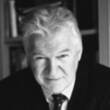The princes of Ireland : the Dublin saga
(Book)
F RUTHE
1 available
Copies
| Location | Call Number | Status |
|---|---|---|
| Central - Adult Fiction | F RUTHE | Available |
Description
More Details
Notes
Table of Contents
Excerpt
Similar Series From Novelist
Similar Titles From NoveList
Similar Authors From NoveList
Published Reviews
Booklist Review
Historical fiction fans can settle in for a long, cozy read as Rutherfurd conducts a spellbinding tour of ancient Ireland. Employing the chatty style he perfected in his best-selling novels Sarum (1987) and London (1997) , he covers 17 centuries of Irish history, beginning in pre-Christian Ireland and culminating in the mid-sixteenth century. From the passionate tale of Conall and Deirdre--a reworking of the celebrated Cuchulainn legend--to the desecration of Irish Catholic churches and shrines during the reign of Henry VIII, the history of this island nation is viewed through a kaleidoscope of interwoven historical and fictional characters caught up in all the pageantry and drama of their particular time and place in history. The real focal point of this sprawling saga is, however, the city of Dublin itself. The first installment in a two-part series on the origins and evolution of one of the world's most venerable urban centers, the narrative is distinguished by the panoramic portrait it paints of Dublin through the ages. Likeames Michener and Leon Uris, Rutherfurd does a magnificent job of packaging a crackling good yarn within a digestible overview of complex historical circumstances and events. After devouring this initial volume, readers will eagerly anticipate the publication of the conclusion of the page-turning Dublin Saga. --Margaret Flanagan Copyright 2004 Booklist
Publisher's Weekly Review
Distinctly evocative of James Michener's all-encompassing recapitulations of history, this lackluster saga by the author of bestselling London and, most recently, The Forest (2000), is the first of a projected two-volume series billed as the Dublin Saga. Rutherfurd begins his tale of the Emerald Isle in pre-Christian Ireland in A.D. 430 with a tragic romance between a maiden, Dierdre, and a Celtic warrior, Conall, hearkening to the legend of the mythic first-century Celtic hero, Cuchulainn. After Conall is offered up as a sacrifice to the Druid gods, the narrative jumps ahead 20 years to Pat Rick's (St. Patrick's) arrival in Ireland in A.D. 450 and his establishment of a small Christian toehold at Dubh Linn. Five centuries later, the Vikings make their mark, and Rutherfurd skips ahead with chronicles of the monastery at Glendalough, the Book of Kells and the death of Brian Boru (founder of the O'Brians) with his Pyrrhic victory over the high king of Tara in 1014. A retelling of King Henry II's arrival in Ireland in 1171 is followed by a cursory account of the reformation of the Irish Church at the Council of Cashel and the story of an obscure 1370 skirmish at Carrickmines Castle (a minor landmark presently doomed to make room for a highway). Rutherfurd sets the last of his ill-connected and artificial sketches in 1537, with Henry VIII hanging Silken Thomas, and Dublin poised at the dawn of the Renaissance. Readers who persevere will glean plenty of historical detail from these pages, but Rutherfurd's uninspiring storytelling makes the journey a slog. (Mar. 2) (c) Copyright PWxyz, LLC. All rights reserved
Library Journal Review
Beginning in the tribal, pre-Christian times of the warrior kings at Tara, this first book in a two-part novelized history of Ireland sweeps readers through the early centuries of Druids, chieftains, monks, Vikings, noblemen, merchants, and mercenaries, ending with the disastrous invasion of England that tragically changed the course of Irish history. Through the eyes of the men and women who built the mighty city that became Dublin, the unfolding of a colorful and turbulent history is told with energy and a meticulous attention to historical detail. As he did so vividly in his previous historical novels (e.g., Sarum), Rutherfurd captures the energy, beauty, and passion that are so much a part of the Irish experience. He is a marvelous storyteller, and readers will anticipate the second book. Like James Michener, Rutherfurd has found the key to crafting sweeping historical sagas with vitality and flair. Highly recommended. [Previewed in Prepub Alert, LJ 11/1/03.]-Susan Clifford Braun, Aerospace Corp., El Segundo, CA (c) Copyright 2010. Library Journals LLC, a wholly owned subsidiary of Media Source, Inc. No redistribution permitted.
Booklist Reviews
Historical fiction fans can settle in for a long, cozy read as Rutherfurd conducts a spellbinding tour of ancient Ireland. Employing the chatty style he perfected in his best-selling novels Sarum (1987) and London (1997), he covers 17 centuries of Irish history, beginning in pre-Christian Ireland and culminating in the mid-sixteenth century. From the passionate tale of Conall and Deirdre--a reworking of the celebrated Cuchulainn legend--to the desecration of Irish Catholic churches and shrines during the reign of Henry VIII, the history of this island nation is viewed through a kaleidoscope of interwoven historical and fictional characters caught up in all the pageantry and drama of their particular time and place in history. The real focal point of this sprawling saga is, however, the city of Dublin itself. The first installment in a two-part series on the origins and evolution of one of the world's most venerable urban centers, the narrative is distinguished by the panoramic portrait it paints of Dublin through the ages. Like James Michener and Leon Uris, Rutherfurd does a magnificent job of packaging a crackling good yarn within a digestible overview of complex historical circumstances and events. After devouring this initial volume, readers will eagerly anticipate the publication of the conclusion of the page-turning Dublin Saga. ((Reviewed January 1 & 15, 2004)) Copyright 2004 Booklist Reviews.
Library Journal Reviews
Rutherfurd does for Dublin what he did for London in a previous panoramic best seller. Copyright 2003 Reed Business Information.
Library Journal Reviews
Beginning in the tribal, pre-Christian times of the warrior kings at Tara, this first book in a two-part novelized history of Ireland sweeps readers through the early centuries of Druids, chieftains, monks, Vikings, noblemen, merchants, and mercenaries, ending with the disastrous invasion of England that tragically changed the course of Irish history. Through the eyes of the men and women who built the mighty city that became Dublin, the unfolding of a colorful and turbulent history is told with energy and a meticulous attention to historical detail. As he did so vividly in his previous historical novels (e.g., Sarum), Rutherfurd captures the energy, beauty, and passion that are so much a part of the Irish experience. He is a marvelous storyteller, and readers will anticipate the second book. Like James Michener, Rutherfurd has found the key to crafting sweeping historical sagas with vitality and flair. Highly recommended. [Previewed in Prepub Alert, LJ 11/1/03.]-Susan Clifford Braun, Aerospace Corp., El Segundo, CA Copyright 2004 Reed Business Information.
Publishers Weekly Reviews
Distinctly evocative of James Michener's all-encompassing recapitulations of history, this lackluster saga by the author of bestselling London and, most recently, The Forest (2000), is the first of a projected two-volume series billed as the Dublin Saga. Rutherfurd begins his tale of the Emerald Isle in pre-Christian Ireland in A.D. 430 with a tragic romance between a maiden, Dierdre, and a Celtic warrior, Conall, hearkening to the legend of the mythic first-century Celtic hero, Cuchulainn. After Conall is offered up as a sacrifice to the Druid gods, the narrative jumps ahead 20 years to Pat Rick's (St. Patrick's) arrival in Ireland in A.D. 450 and his establishment of a small Christian toehold at Dubh Linn. Five centuries later, the Vikings make their mark, and Rutherfurd skips ahead with chronicles of the monastery at Glendalough, the Book of Kells and the death of Brian Boru (founder of the O'Brians) with his Pyrrhic victory over the high king of Tara in 1014. A retelling of King Henry II's arrival in Ireland in 1171 is followed by a cursory account of the reformation of the Irish Church at the Council of Cashel and the story of an obscure 1370 skirmish at Carrickmines Castle (a minor landmark presently doomed to make room for a highway). Rutherfurd sets the last of his ill-connected and artificial sketches in 1537, with Henry VIII hanging Silken Thomas, and Dublin poised at the dawn of the Renaissance. Readers who persevere will glean plenty of historical detail from these pages, but Rutherfurd's uninspiring storytelling makes the journey a slog. (Mar. 2) Copyright 2004 Reed Business Information.
Reviews from GoodReads
Citations
Rutherfurd, E. (2005). The princes of Ireland: the Dublin saga . Ballantine.
Chicago / Turabian - Author Date Citation, 17th Edition (style guide)Rutherfurd, Edward. 2005. The Princes of Ireland: The Dublin Saga. New York: Ballantine.
Chicago / Turabian - Humanities (Notes and Bibliography) Citation, 17th Edition (style guide)Rutherfurd, Edward. The Princes of Ireland: The Dublin Saga New York: Ballantine, 2005.
Harvard Citation (style guide)Rutherfurd, E. (2005). The princes of ireland: the dublin saga. New York: Ballantine.
MLA Citation, 9th Edition (style guide)Rutherfurd, Edward. The Princes of Ireland: The Dublin Saga Ballantine, 2005.






































